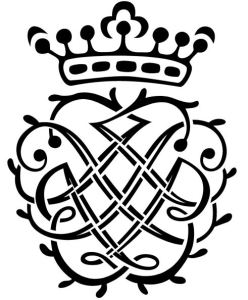Mozart: Apollo et Hyacinthus
Classical Opera, Ian Page, Thomas Guthrie
St John’s, Smith Sq. 13 June 2017
‘Lambach’ Symphony in G; Grabmusik, Apollo et Hyacinthus
As part of their ambitious Mozart 250 project (presenting Mozart’s music on the anniversary of their composition, culminating in 2041), Classical Opera presented the last of four concerts focussed on 1767, Mozart’s 11th year, with a staged performance of Apollo et Hyacinthus, preceded by his ‘Lambach’ Symphony in G and the Grabmusik, also staged. This was a very clever and extremely well performed concert, exploring music that is not as well-known as it should be, with very sensitive stagings conceived and directed by Thomas Guthrie. The ‘Lambach’ Symphony in G (K45a) is believed to have been written in 1766 by the 10-year old Mozart. It was found in two manuscripts in Lambach Abbey, Austria. Like many other early Mozart works, it is beguiling in its elegant simplicity and harmonic inventiveness, here added to by having the first movement main theme first appearing in the bass, although on this occasion it wasn’t all that prominent. While it was playing, people walked across the St John’s stage, their relevance becoming clear when the bustling final movement of the Symphony segued directly, and very effectively, into the opening of the Grabmusik.
Grabmusik was based on a Holy Week tradition of performing a sepolcro cantata centered on the grave of Christ. It consists of a dialogue between a lamenting soul and an angel. Mozart’s composition was probably first performed on Good Friday 1767 in Salzburg Cathedral. It is attached to the story that the Prince Archbishop of Salzburg, not believing that a child could write such advanced music, locked the 11-year old Mozart up for a week in isolation, with only music paper, with Grabmusik being the result. It opens with a dramatic Aria for The Soul (Benjamin Appl), Brüllet ihr Donner! Blitz und Flammen, followed by a subdued and consoling response from The Angel (Gemma Summerfield)  before the two combine. Thomas Guthrie’s staging depicted the funeral rites of a child, movingly held by The Soul, and finally laid on the central catafalque. The imagery was incredibly strong and emotive, not least in its simplicity. Although the sung words were obviously specific, there was no specific religious imagery in the staging. The child’s size suggested an age of about 6, allowing for many personal reflections on life and death in the world of today, rather than 2,000 years ago. The orchestra of Classical Opera were based at floor level, just in front of the usual stage. The seating had been arranged in the form of a cross, with a central aisle, used by the singers in Grabmusik and Apollo et Hyacinthus.
before the two combine. Thomas Guthrie’s staging depicted the funeral rites of a child, movingly held by The Soul, and finally laid on the central catafalque. The imagery was incredibly strong and emotive, not least in its simplicity. Although the sung words were obviously specific, there was no specific religious imagery in the staging. The child’s size suggested an age of about 6, allowing for many personal reflections on life and death in the world of today, rather than 2,000 years ago. The orchestra of Classical Opera were based at floor level, just in front of the usual stage. The seating had been arranged in the form of a cross, with a central aisle, used by the singers in Grabmusik and Apollo et Hyacinthus.
Apollo et Hyacinthus is usually thought of as Mozart’s first opera, although the description is perhaps a little misleading. It was composed in 1767 for the grammar school linked to Salzburg’s Benedictine University as an entertainment (or intermedia) to be performed during the intervals of a larger-scale play. The Apollo et Hyacinthus story depicts the death of the boy Hyacinthus from a discuss throw, and was linked to the play’s depiction of the accidental death of the King of Lydia’s by a misdirected spear. In the libretto that Mozart used, the homosexual implications of the original myth were downplayed by adding the roles of Hyacinthus’s father King Oebalus and sister Melia, the latter becoming the love object of Apollo, rather than the boy Hyacinthus. There are five arias, two duets, a chorus and a trio, all linked by recitative. It is in three parts, originally performed separately between acts of the play.
The Prologue is centred around a pagan altar where King Oebalus prepares offerings to Apollo. a lightening strike that destroys the altar (and gives somebody a sprained wrist) leads to assumptions that their offerings have been rejected. Apollo appears in the guise of a shepherd, and takes the fancy of Melia. The second two sections (referred to as ‘Choruses’) tell the story of Hyacinthus being struck by a wayward discuss thrown by Zephyrus, for which Apollo has him blown apart by a wind. The final section sees a degree of resolution as Hyacinthus is transformed into a bank of flowers, here mercifully replaced by a sprinkling of petals in Thomas Guthrie’s interpretation.
In the original performance, all but one of the roles were sung by treble and alto boys between the ages of 12 and 17, with a 22-year old student taking the role of Oebalus, King of Lacedaemonia. On this occasion the singers were Benjamin Hulett, King Oebalus, Klara Ek, Melia, Tim Mead, Apollo, James Hall, Zephyrus, and Gemma Summerfield, Hyacinthus, with Aaron O’Hare and Richard Latham as the Priests of Apollo. The quality of the singing and acting was outstanding, as was the playing of the orchestra, led by Bojan Čičić, with particular contributions from the continuo team of Gavin Kibble, Christine Sticher and Christopher Bucknall. Ian Page’s conducting was attractively undemonstrative and the more effective for that. Thomas Guthrie’s directing of the staging was exemplary, concentrating on the characters and the music, with few, if any, add ons.
